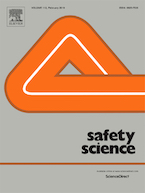Explaining self-reported traffic crashes of cyclists: An empirical study based on age and road risky behaviors
- Autores: Sergio Useche, Francisco Alonso, Luis Montoro, Cristina Esteban. (2019).
- Tipos de publicación: Article
- URL Publicación: Explaining self-reported traffic crashes of cyclists: An empirical study based on age and road risky behaviors
- Título Publicación (nombre del libro o revista): Safety Science. Num.113:105-114
-
Resumen:
The growing rates of traffic crashes involving cyclists are currently recognized as a major public health and road safety concern. Furthermore, risky behaviors on the road and their precedent factors have been conceptualized as potential determinants for explaining, intervening and preventing traffic injuries of cyclists. Objectives: This study aimed at examining whether individual factors and self-reported risky behaviors could explain the crash rates of cyclists in a period of 5 years. Methods: A sample of 1064 cyclists was used, with a mean age of 32.83 years. Participants answered a survey assessing demographic data and information on risky behaviors, risk perception, knowledge of norms, and suffered cycling crashes. Results: Using Structural Equation Models, it was found that crash rates in cyclists could be explained through risky behaviors, risk perception, knowledge of traffic norms and cycling intensity. Through a multi-group path model differentiating cyclists by age group, it was also found that cycling intensity has a differential impact on self-reported crashes in older (age > 25) and younger (age<=25) cyclists. Conclusions: This study suggests that risky behaviors mediate the relationship between the individual factors and the crash rates of cyclists, and that age exerts an important effect in the variation of the explanatory structure of the model. The design of educational tools would be useful for promoting not only the avoidance of risky behaviors, but also a generalized awareness on road safety issues. Practical applications: This research provides an empirical precedent in the study of the impact of factors related to risky behaviors on the road and to safety outcomes of cyclists.
DOI: 10.1016/j.ssci.2018.11.021ISSN: 0925-7535










